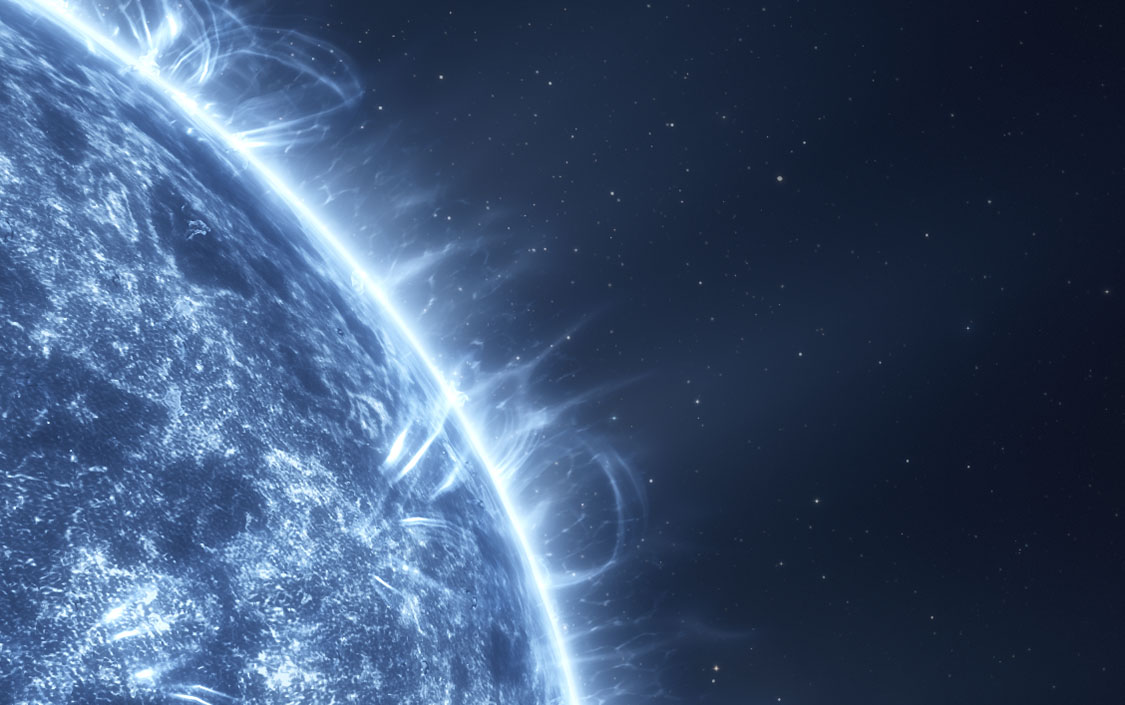searching for the biggest stars in the cosmos

Like the overwhelming majority of stars in the universe, our sun will die with a whisper. When stars which tip the scales at more than 1.5 times the mass of our sun end their lives, they go out with a bang, leaving either a highly compressed core we know as a neutron star, or a collapsed gravitational well we call a black hole. But when stars that exceed an astonishing 130 solar masses run out of fuel, something even stranger happens. Instead of just collapsing into a giant black hole, they completely disintegrate according to astronomers who ran the numbers on these theoretical hypergiants. Until now, there was skepticism such giant stars can even exist, much less how they explode. However, supernova SN2007bi, seen in April 2007 as implied by its name, could confirm than not only do 150+ solar mass titans exist, they behave just as the models would predict.
In 2005, the results of a star survey of our galaxy seemed to point to an upper limit on stellar mass as was implied by Eddington limit, which predicts a tipping point between a star’s gravitational forces and the force of radiation inside the star. Exceed the limit and stars begin to shed their upper layers with a fierce solar wind, losing mass. At some point, stars should no longer be able to hold themselves together and that point might well have been around 150 solar masses, an idea which was further boosted by the lack of identifiable giants exceeding this benchmark in the Milky Way. However, the Eddington limit is not absolute and is actually more of a rule of thumb than a concrete ruling on the maximum mass and luminosity of stars. Depending on what goes on inside these giant balls of superheated plasma, the limit could be violated without the predicted loss of mass. This is where SN2007bi comes into play.
Giant stars burn their fuel very quickly so an immense sun which weighs in at 130 solar masses or more, has few heavy elements in its core while it rapidly burns away. Photons created in the thermonuclear furnace of its innards keep the star from collapsing in on itself until the fuel begins running out and the sun contracts, which cranks up the heat. In these extreme conditions, photons become electrons and their antimatter counterparts, positrons. But these matter/antimatter pairs won’t provide enough outbound energy to keep the star from the now inevitable collapse. The star now contracts even further, cranking up the heat and pressure past the point of no return and a runway thermonuclear reaction in its oxygen rich core tears the titanic sun apart in a brilliant supernova event. After the blast nothing is left of its progenitor. There’s no neutron star, no black hole, just an immense cloud of freshly synthesized nickel-56 which will eventually decay into an isotope of iron. And it’s this cloud of radioactive nickel which attracted the attention of a team of astrophysicists and astronomers.
More then three sun’s worth of nickel-56 was blasted out during the SN2007bi supernova and it lit the clouds of gaseous debris for months. Plugging this into a mathematical model for how titanic supernova progenitors explode, yields an initial stellar core of 100 solar masses. That means the event itself was what’s known as a pair-instability supernova, the process we just covered above. SN2007bi’s progenitor may have weighed in at a jaw dropping 200 solar masses by an enthusiastic estimate. Just 50 solar masses more and the gamma rays generated during the blast would’ve been so intense, they’d break apart atoms streaming away from the blast, slowing down the explosion and allowing the immense core to collapse into a black hole. We can even find out how big that black hole could be and how long it would last with a pair of handy formulas.
rs = 2Gm / c2 = 2(6.673 × 10–11 m3 kg-1 s-2)(4.97 × 1032 kg) / 8.99 × 1016 m/sec = 738,150 m
tev = 3M / 3K = 3(4.97 × 1032 kg) / 3(3.89 × 1015 kg3 s-1) = 1.03 × 1082 sec or 3.26 × 1074 years
So if we ever found a supernova generated by a 250 solar mass star, the result would be a titanic black hole just shy of 1.5 million meters across and with an expected lifetime in a time range that should keep it going strong through the heat death of the known universe. Of course no one has seen any evidence of a 250 solar mass star or above, right? Well, maybe they have. On the edge of a galaxy ESO 243–49, is a 500 solar mass black hole which seems far too heavy to be formed by any known star but is absolutely puny compared to the supermassive monsters found in galactic cores. Could it be a remnant of a titanic sun? Since we now seem to have observational evidence of 130 to 250 solar mass hypergiants, maybe a rare 1,000 solar mass beast isn’t completely out of the question? Although we should note that the mechanics of such a gigantic star ever being born and stabilizing itself for at least a few million years are pretty daunting…
See: Gal-Yam, et. al, (2009). Supernova 2007bi as a pair-instability explosion Nature, 462 (7273), 624–627 DOI: 10.1038/nature08579





